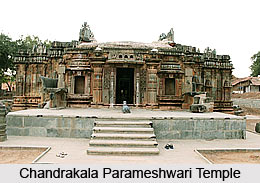 The temples of Gulbarga district in Karnataka are some of the extraordinary constructions of the ancient days that depict the artistic skills of the ruling dynasties in Karnataka. The Gulbarga district is situated in the northeastern part of Karnataka and is a major tourist destination, which generates high revenue for the district. The main temples of Gulbarga district in the district are Sharana Basveshwara Temple and Sri Ram Mandir. Sri Kshetra Gangapur is a famous pilgrimage center of God Sri Sadguru Dattarya that is situated very close to Gulbarga. Thousands of pilgrims visit the temples of Gulbarga district during the annual festivals.
The temples of Gulbarga district in Karnataka are some of the extraordinary constructions of the ancient days that depict the artistic skills of the ruling dynasties in Karnataka. The Gulbarga district is situated in the northeastern part of Karnataka and is a major tourist destination, which generates high revenue for the district. The main temples of Gulbarga district in the district are Sharana Basveshwara Temple and Sri Ram Mandir. Sri Kshetra Gangapur is a famous pilgrimage center of God Sri Sadguru Dattarya that is situated very close to Gulbarga. Thousands of pilgrims visit the temples of Gulbarga district during the annual festivals.
Chandrakala Parameshwari Temple is one of the oldest temples of Gulbarga district that was constructed 1,200 years back. The Chalukyas who ruled the region built this old temple situated at Hongunta in Shahabad Taluk. The chief deity of the temple is goddess Shakti, also called as Chandrakala Parameshwari. Hindu traditions state that Shakti is the mother Goddess, the source of the universal principle of energy, power or creativity. Devotees from throughout the country come here to pay their offerings to Goddess Chandrakala Parameshwari. The merging of the Bhima River and Kagina River here is beautiful to perceive. Sangamnath Temple and Benki Thatha`s Shrine are two more temples of Gulbarga district located nearby.
Chinmalli Mallikarjuna Temple, one of the delightful temples of Gulbarga district is situated at Chinmalli, about 50 km from Gulbarga, in Karnataka. This 12th century shrine is nestled on the banks of Bhima River. This temple enshrines Lord Shiva as the presiding deity and a beautiful Shivling is installed in the sanctum sanctorum of the temple. The temple boasts an impressive octagon hall. According to an inscription in this temple, the Yadava dynasty king Ramachandra`s wife Mahamandaleshwari Mayi offered contributions in this temple. Another inscription on the walls describes the method of offering puja to Mallikarjuna.
The annual festivals in the temples of Gulbarga district are usually held in January and are a major draw. The `footwear procession,` held once in three years on the previous day of Sankranti, attracts thousands of devotees from far a near to the temples of Gulbarga district.





















